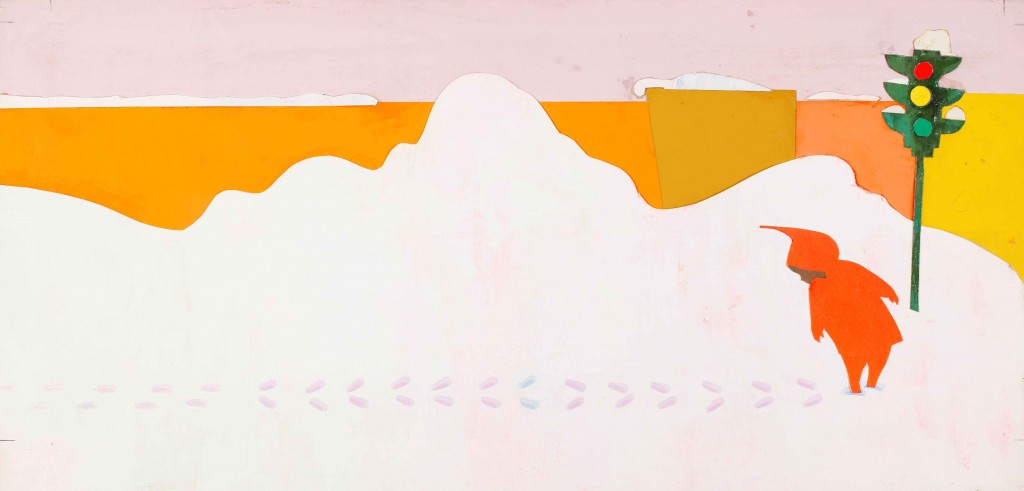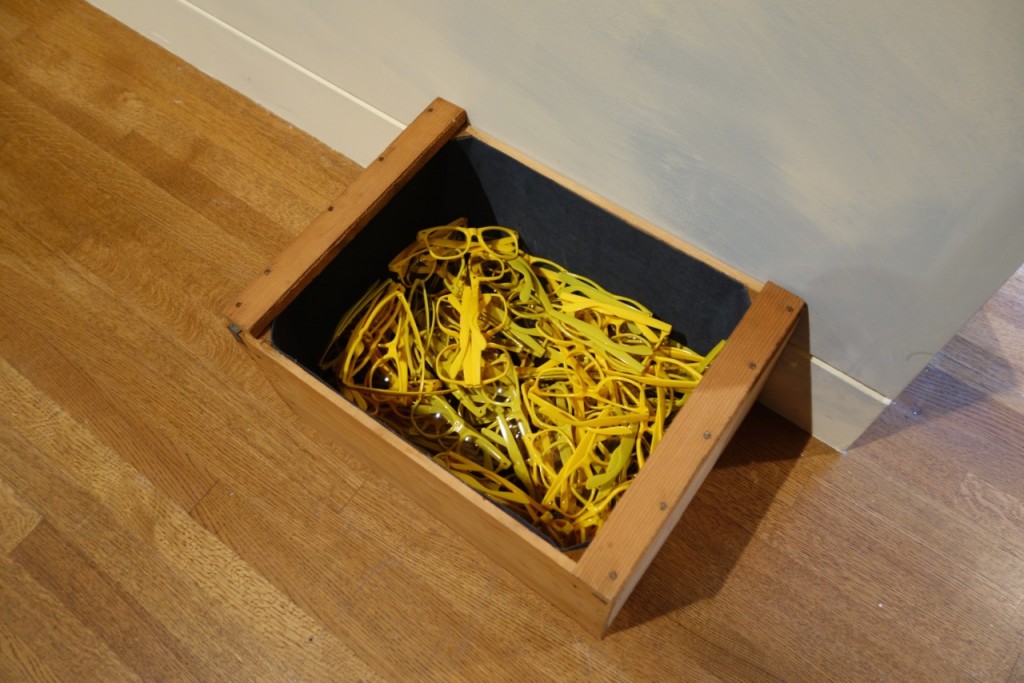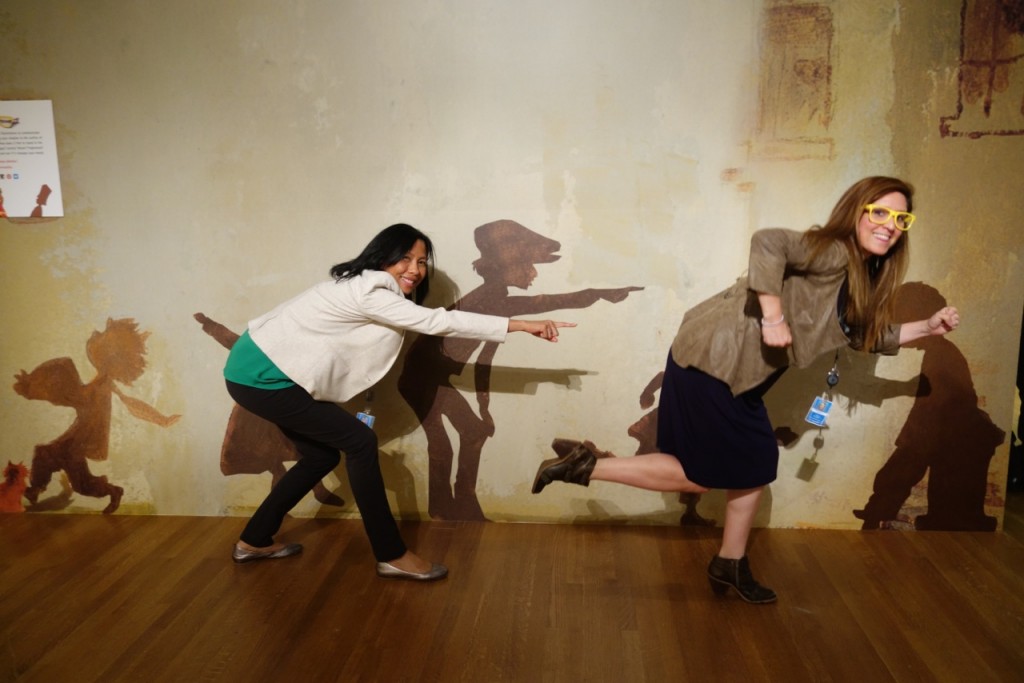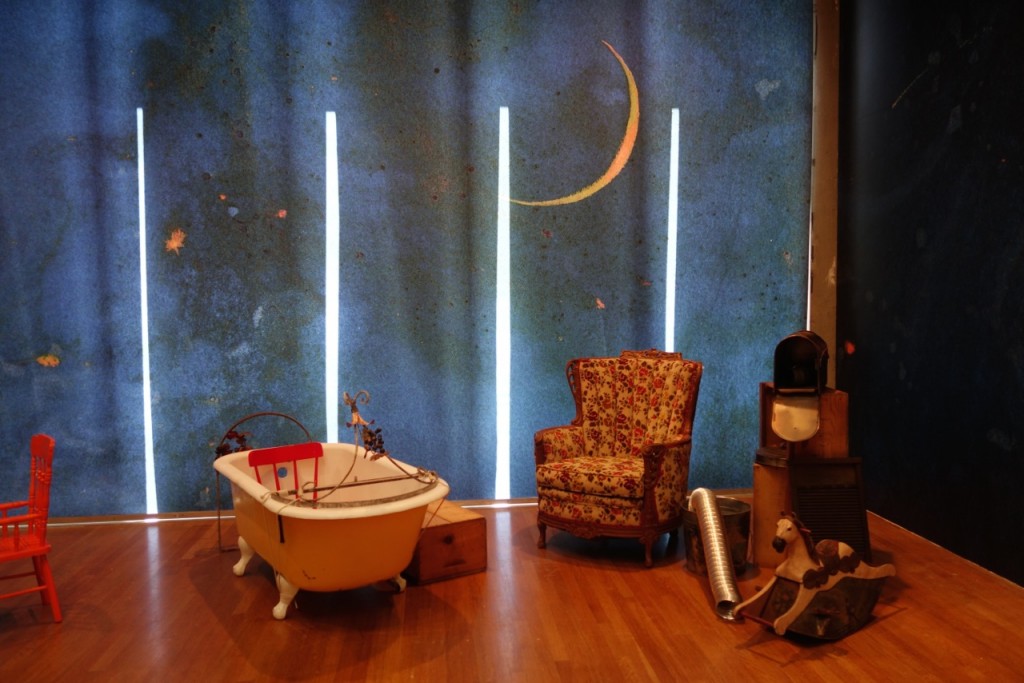The Snowy Day changed the world of children’s literature by introducing the first African American hero.
We’re grateful for hours of cozy reading in bed with our kids, and so always appreciate learning more about a particular author or illustrator. Ezra Jack Keats is the subject of a new show at the Skirball Cultural Center – The Snowy Day and the Art of Ezra Keats, open through September 17, 2014. His 1962 book The Snowy Day changed the world of children’s literature by introducing the first African American hero. This terrific new show aims to give children who love books an immersive experience about Keats’ creative process and the close ties between his work and his life.
The Snowy Day is a beautifully realized book about a little boy named Peter experiencing his first snow storm. The details of this story were quite unusual for the time – Peter is African American and the snow he explores lies not in a lovely country town but on the streets of the inner city. These two factors were both unique in the world of children’s literature; before 1962, black characters were rare, and if they appeared at all were marginal figures or caricatures such as Little Black Samba. The Skirball show aptly points this out in a section about the progress of African American characters throughout the history of children’s literature.
The Snowy Day went on to sell more than 5 million copies and win the Caldecott Medal; it was a groundbreaking influence on generations of authors and illustrators to follow, not only because Keats featured an African American hero but because he depicted disenfranchised peoples and urban environments. After the success of The Snowy Day, Keats wrote several more books about Peter. The show features work from throughout Keats’s career, including depictions of his childhood in a Brooklyn tenement.
Keats was Jewish, though many assumed he was African American after his book was released in the midst of the civil rights movement.
With paintings hung close to a child’s eye level, and with plenty of interactive features — a tenement stoop is reproduced to sit on, for instance, and there are sounds of boots in the snow in the main gallery to inspire young ones to traipse through some fake “snow” and leave footprints like Peter. The show is geared for kids to enjoy themselves and to inspire their imagination..
The first thing you will do when entering the gallery is don a pair of yellow glasses, called Goggles because of a story about a pair of Goggles that feature prominently in the first display.
Look for the icon of the Goggles as you proceed through the exhibition, and explore the instructive and interactive content of these signs. You’ll also find a helpful book designed for kids, that will help them interpret the show, and which can be repurposed as paper to be used for collage. Collage was an important feature of Keats’ work, as evident in his later paintings.

Shadows were important to Keats, as well, so here is wall where kids can project their own shadows — this feature is designed to help them understand how depicting the body on paper can express emotions.
After exploring the galleries and all of Keats’ gorgeous collages and paintings, come to a room where toys and books and comfy armchairs welcome further creative play and exploration of books by Keats and other beloved authors. There is an art-making table, and a huge wall dedicated to collage creation.
The Skirball offers a six-week course for kids from 3-4 1/2 as part of the Skirball Explorers program, Tuesdays, April 29–June 3, 10:30 AM–Noon. The course will offer hands-on crafts, music, storytelling and snacks.








